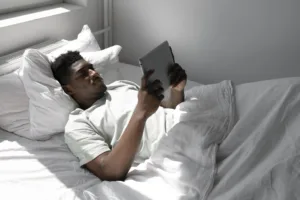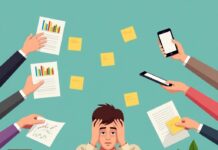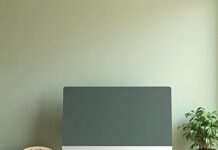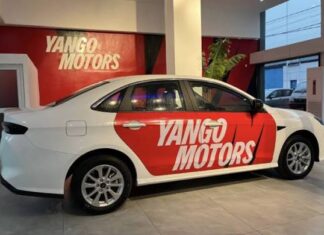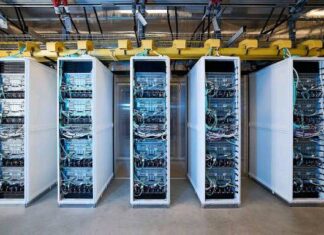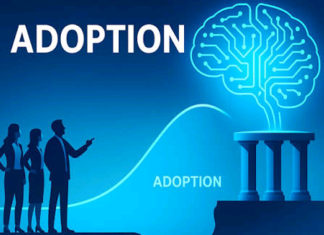When you purchase through links on our site, we may earn an affiliate commission. This doesn’t affect our editorial independence.
Restless nights plague millions despite our technological advances. The good news? Modern tech for better sleep has finally matured beyond marketing hype into genuinely effective tools. This breakdown cuts through exaggerated claims to reveal which sleep gadgets actually deliver results according to legitimate research.
Beyond Basic Sleep Tracking
Most people misunderstand what sleep trackers. actually measure. Current sleep tech monitors typically track:
- Total time asleep versus awake
- Movement patterns (proxy for sleep stages)
- Environmental factors (temperature, sound, light)
- Heart rate variations throughout the night
While commercial devices can’t match laboratory polysomnography, recent validation studies from the Sleep Research Society show today’s trackers provide reasonably useful data for identifying disruptive sleep patterns. The key lies in tracking trends rather than obsessing over nightly numbers.
Smart Mattresses Worth The Investment
Traditional mattress shopping focused on subjective comfort. Now, embedded tech for better sleep brings objective measurements into bedroom decisions. Companies like Eight Sleep incorporate research-backed temperature regulation – addressing research showing bedroom temperature between 60-67°F creates optimal sleep conditions.
A particularly revealing 2023 study published in Journal of Sleep Research tested temperature-regulating mattress technology against traditional bedding:
- Deep sleep increased 13% on average
- Nighttime awakenings decreased by nearly 16%
- Morning alertness scores improved significantly
Smart mattress shoppers should focus on these evidence-supported features:
- Dynamic temperature adjustment (genuinely makes difference)
- Pressure redistribution (matters for pain prevention)
- Position adjustment (helpful for snoring)
- Sleep cycle-based alarms (mixed evidence but promising)
Skip gimmicky features like built-in TVs or refrigerated compartments – pure novelty without sleep benefit.
Light Manipulation That Works
Humans evolved with sunset-to-sunrise light patterns governing sleep. Modern lighting destroys these natural cues. Effective sleep tech restores healthy light exposure through specific interventions.
Blue-Blocking Glasses Actually Work
Despite seeming almost too simple, amber-tinted glasses provide remarkable benefits before bedtime. A comprehensive 2021 meta-analysis in Sleep Medicine Reviews analyzed multiple controlled studies and found consistent improvements:
- Sleep onset latency decreased 11-23 minutes
- Sleep quality scores improved significantly
- Morning grogginess reduced measurably
The science explains why: blocking blue wavelengths prevents melatonin suppression. Cheap glasses work fine if they block the right spectrum – expensive brand names offer minimal additional benefit.
Smart Lighting Systems Show Promise
Programmable systems like Philips Hue automatically transition toward warmer, sleep-friendly light spectrums as evening progresses. Research in the International Journal of Environmental Research and Public Health measured melatonin production increases approaching 58% with proper evening light temperatures.
For maximum benefit:
- Program gradual transitions starting 2-3 hours before bedtime
- Aim for under 3000K color temperature in evening hours
- Reduce brightness below 50% after dinner
- Eliminate blue-spectrum light completely 60 minutes pre-sleep
Sound Machines: Simple But Effective
Acoustic tech for better sleep remains among the most consistently validated interventions across diverse populations. Multiple analyses compiled by Sleep Medicine Reviews found noise-masking technologies improve both subjective and objective sleep measures.
The newer adaptive machines like Sound+Sleep adjust output based on environmental noise detection – proving more effective than constant white noise in disruption-heavy environments.
Research-backed usage tips:
- Volume between 60-70 decibels (conversation level)
- Place device at least 3 feet from sleeping position
- Choose sound profiles matching specific disruptions (traffic vs voices)
- Consistent usage improves effectiveness over time
Wearable Tech for Better Sleep: Mixed Results
The market floods with sleep-tracking wearables making bold claims. The American Academy of Sleep Medicine cautions consumer devices show tremendous variability in measurement accuracy. However, specific devices demonstrate better research validation:
Oura Ring Shows Legitimate Accuracy
The Oura Ring appears uniquely positioned among wearables. Studies in Behavior Research Methods found its sleep staging aligns surprisingly well with clinical polysomnography – particularly for deep sleep and REM detection.
Sleep specialists note Oura’s placement on the finger (rather than wrist) allows access to more stable pulse measurements throughout the night, explaining its comparative accuracy advantage.
Smartwatch Limitations
Apple Watch and select Fitbit models provide reasonable accuracy for basic sleep duration and disruption patterns according to Journal of Clinical Sleep Medicine validation studies. However, their sleep stage determinations remain questionable at best.
The sleep tech debate among researchers centers on whether detailed staging matters for consumer devices or if simple duration/disruption tracking provides sufficient actionable insights.
Tech Apps for Better Sleep With Actual Evidence
The app marketplace contains thousands of sleep programs – most entirely unvalidated. These exceptions stand apart with substantial research backing:
CBT-I Coach Delivers Gold-Standard Therapy
Developed through the U.S. Department of Veterans Affairs, CBT-I Coach translates cognitive behavioral therapy for insomnia into accessible digital format. The American College of Physicians identifies CBT-I as the preferred first-line treatment for chronic insomnia before medication.
Research tracking actual users in JMIR Mental Health documented impressive outcomes:
- Insomnia severity scores dropped 20% average
- Sleep efficiency improved significantly
- Anxiety surrounding bedtime decreased

The app stands out by adhering strictly to clinically-validated protocols rather than creating proprietary approaches without evidence.
Sleepio Demonstrates Clinical Success as Tech for Better Sleep
The Sleepio platform offers another digital CBT-I program with substantial validation. An unusually large-scale study published in JAMA Psychiatry demonstrated improvements that matched or exceeded traditional face-to-face therapy.
The program works through cognitive restructuring around sleep attitudes, stimulus control, and gradual sleep restriction – established therapeutic techniques translated effectively to digital format.
When Technology Creates Problems
The sleep tech industry rarely acknowledges how technology contributes to sleep disruptions. The National Sleep Foundation research consistently shows:
- Screen use within 60 minutes of bedtime delays sleep onset
- Notification sounds fragment sleep architecture
- Social media browsing increases cognitive arousal incompatible with sleep
Even nighttime mode settings provide incomplete protection. Establishing true tech boundaries creates more benefit than most gadgets:
- Create hard cutoff times for screens
- Keep phones outside the bedroom entirely
- Use dedicated alarm clocks rather than phones
Emerging Tech For Better Sleep Worth Watching
Several cutting-edge sleep tech categories show preliminary promise but need additional validation:
Transcranial Stimulation: Early Evidence
Devices like those from Flow Neuroscience deliver mild electrical current to enhance slow-wave sleep. Early clinical trials in Sleep Medicine suggest potential applications for specific sleep disorders, though consumer applications remain ahead of conclusive evidence.
Smart Pillows: Preliminary Promise for Tech for Better Sleep
Responsive pillows incorporating speakers, cooling elements, and position adjustment motors continue evolving toward validation. Research presented at recent SLEEP Conferences indicates potential benefits for sleep apnea and position-dependent sleep issues, though few controlled studies exist for consumer products.
Making Evidence-Based Sleep Tech Decisions
When evaluating tech for better sleep, consider these research-guided principles:
- Prioritize addressing identified sleep problems rather than novelty
- Check for validation against established sleep measures
- Consider cost-effectiveness compared to basic interventions
- Avoid overlapping redundant tracking technologies
Tech For Better Sleep Bottom Line
The sleep tech landscape includes genuine innovations alongside elaborate placebos. The most effective tech for better sleep addresses specific disruption factors with targeted interventions backed by sleep science. Fancy marketing can’t replace validation.
For those struggling with persistent sleep problems, the American Academy of Sleep Medicine maintains a directory of certified sleep specialists who can provide proper assessment and integrate appropriate technology into comprehensive treatment plans.
The most overlooked truth? Basic sleep hygiene – consistent schedules, comfortable environments, and evening wind-down routines – remains more powerful than most gadgets. The best sleep tech supplements these fundamentals rather than attempting to replace them.
